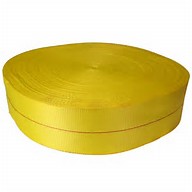- Local: (516) 346-4636
- Toll-Free: (800) 886-6060
- Fax: (516) 346-4366
- Email: kflynn@nationalwebbing.com
 Poly webbing, commonly used in various applications ranging from outdoor gear to industrial safety devices, is frequently exposed to sunlight. Understanding the UV resistance of different poly webbing materials is critical for manufacturers to ensure longevity and maintain the structural integrity of their products.
Poly webbing, commonly used in various applications ranging from outdoor gear to industrial safety devices, is frequently exposed to sunlight. Understanding the UV resistance of different poly webbing materials is critical for manufacturers to ensure longevity and maintain the structural integrity of their products.
UV degradation occurs when ultraviolet radiation breaks down the chemical bonds in a polymer, leading to a loss of mechanical strength and elasticity, color fading, and, eventually, material failure. This degradation is particularly critical for poly webbing because it directly impacts the material's durability and safety. Polypropylene and polyester are the two most used fibers in the manufacture of poly webbing. Both materials have inherent properties that affect their UV resistance.
To improve the UV resistance of poly webbing, manufacturers often rely on various additives and treatments.
Polyester webbing generally offers the best UV resistance among common poly webbing materials, particularly when enhanced with stabilizers and HALS. Manufacturers must carefully select and treat their poly webbing materials based on their products' specific requirements, balancing factors such as cost, performance, and regulatory compliance to ensure optimal durability and safety under UV exposure.